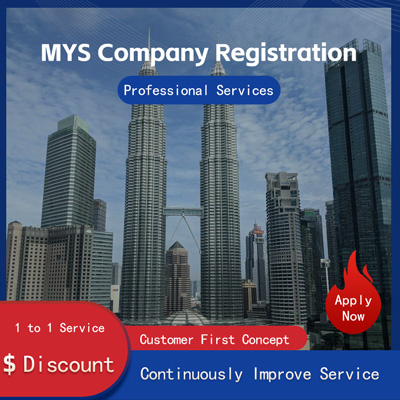
VAT Rates Across Different Countries in Europe A Look at Value Added Tax
What are the VAT tax rates in various European countries?
The European Union EU, as one of the highest degree regional organizations in the world, has high coordination among its member states in economic, legal and tax fields. As a common tax type adopted by EU member states, Value Added Tax VAT plays an important role in promoting economic growth, ensuring fiscal revenue balance, and advancing the construction of a single market. However, although VAT is a unified tax type stipulated by the EU, each member state can set different tax rate structures according to its own circumstances. So, what are the VAT tax rates in various European countries?

According to EU regulations, member states can divide VAT into three types standard rate, reduced rate, and zero rate. Among them, the standard rate must not be lower than 15%, while the reduced rate must not be lower than 5%. This regulation aims to ensure fair competition between member states while giving each country certain flexibility to respond to the special needs of their national economy and social development. For example, France's standard VAT rate is 20%, but for basic necessities such as food and books, a lower reduced rate of 10% is applied; In Germany, the standard rate is also 19%, but some cultural activities and services are subject to a reduced rate of 7%.
It is worth noting that despite the EU setting minimum standard rates, there are significant differences in actual implementation across different countries. For instance, Hungary has implemented a high standard VAT rate of 27% since 2012, becoming the highest level within the EU. This approach is closely related to its goal of increasing fiscal revenue through higher consumption taxes. In contrast, Austria and Luxembourg have adopted a more moderate strategy. Both countries' standard rates are 20%, and they do not offer additional high-rate options. This reflects these countries' preference for stabilizing their tax systems to attract investment and promote economic development.
In addition to the standard and reduced rates mentioned above, some member states also enjoy special zero-rate treatment. For example, Ireland applies a zero-rate policy to its export goods and services to enhance the international competitiveness of its enterprises. Similarly, the UK enjoyed a similar zero-rate privilege before Brexit, but this advantage is gradually weakening as the Brexit process progresses.
From the perspective of news reporting, in recent years, discussions about adjustments to VAT rates have always been highly focused. Take France as an example. In 2018, the country sparked nationwide Yellow Vest protests due to an increase in fuel taxes, and was ultimately forced to abandon the relevant plan. This event shows that even in developed countries with mature market economies, any tax reform involving people's livelihoods must be handled with caution, or it may trigger social unrest. Spain recently announced a reduction in the VAT rate for the tourism industry to 10%, aiming to stimulate the recovery of tourism and alleviate the economic pressure caused by the pandemic. This measure not only demonstrates the ability of EU member states to flexibly use VAT tools but also provides valuable experience for other countries facing similar challenges.
In summary, although the VAT tax rates in various European countries may appear complex and changeable on the surface, they actually reflect deeper economic considerations. For ordinary consumers, understanding these rate differences can help them plan personal financial expenditures reasonably; for business operators, it is necessary to closely monitor changes in relevant policies so as to adjust their business strategies in time. In short, the VAT tax rate system in Europe is both an important part of regional integration and a specific manifestation of national sovereignty. In the future, with changes in the global economic landscape, this system will continue to evolve and improve.
Still have questions after reading this? 26,800+ users have contacted us. Please fill in and submit the following information to get support.

Previous Article
What Is the Formula for Calculating Volumetric Weight? How to Calculate It?
May 07, 2025Service Scope
MoreRecommended for You
- Does eBay Cross-Border E-commerce Delivery Require Customs Declaration? Detailed Explanation of Shipping Methods and Efficiency
- How to Bind Payment Account After Opening Store on Shopee? What Are the Requirements?
- How to Price Shopee Store Products Reasonably? What Is the Suggested Pricing Gap for Shopee?
- Best-Selling and High-Profit Product Category Analysis on Shopee Taiwan Local Site
- What to Do If eBay Purchases Aren't Shipped? How to File a Complaint?
- Amazon Store Discount Event Time Participation Method in 2025
- How to Withdraw Lazada Wallet Balance to P-Card?
- How to Enable Credit Card Payments on Shopee? Platform Collection Methods and Fee Comparison
- How Do Shopee Thailand Local Sellers Apply for Free Shipping? In-depth Interpretation of Free Shipping Policy
- What Are the Fees for a New eBay Store? Detailed Explanation of Charging Rules
- Can Lazada Post Products of Different Categories? How to Modify the Category?
- How to Find UK-Based Sellers on eBay UK? What Should You Pay Attention to?
- How to Ship via Shopee for Lazada Store Groups? Is There Still Opportunity for Lazada Store Groups?
- How Does Facebook Ad Charge? Can the Ad Cost Be Refunded?
- How to Bind Lazada Account to Corporate Alipay and Address Tax Issues for Alipay Receipts
- Best-Selling Auto Parts on eBay US and Product Selection Tips
- How to Top eBay Discount Promotion? Detailed Guide on Setup Method
- How Shein Opens Stores in Japan Process and Conditions Unveiled
- Does Lazada Support Alipay and WeChat Pay? What Are the Payment Methods?
- How to Find Keywords for Lazada Products? How to Copy Lazada Products?


 ONE
ONE








Customer Reviews
Small *** Table
December 12, 2024The experience was very good. I was still struggling to compare it with other companies. I went to the site a few days ago and wanted to implement it as soon as possible. I didn't expect that everything exceeded my expectations. The company is very large, with several hundred square meters. The employees are also dedicated and responsible. There is also a wall of certificates. I placed an order on the spot. It turned out that I did not make a wrong choice. The company's service attitude is very good and professional. The person who contacted me explained various things in detail in advance. After placing the order, the follow-up was also very timely, and they took the initiative to report the progress to me. In short, I am very satisfied and recommend this company!
Lin *** e
December 18, 2024When I first consulted customer service, they recommended an agent to me. They were very professional and patient and provided excellent service. They answered my questions as they came in. This 2-to-1 service model is very thoughtful. I had a lot of questions that I didn’t understand, and it’s not easy to register a company in Hong Kong. Fortunately, I have you.
t *** 7
December 19, 2024I originally thought that they only did mainland business, but I didn’t expect that they had been doing Hong Kong business and were doing very well. After the on-site interview, I decided to ask them to arrange the registration of my Hong Kong company. They helped me complete it very quickly and provided all the necessary information. The efficiency was awesome. It turns out that professional things should be done by professionals.👍
b *** 5
December 16, 2024In order to register a company in Hong Kong, I compared many platforms and stores and finally chose this store. The merchant said that they have been operating offline for more than 10 years and are indeed an old team of corporate services. The efficiency is first-class, and the customer service is also very professional.